Office landlords in the Central Loop are worried. About 2 million square feet of space is projected to become vacant within the next three years. And they face stiffer competition than ever before — no longer are they just competing with one another, they’re fending off owners with new product in fast-growing submarkets like the West Loop.
“This is causing building owners in the Central Loop to come together and talk about ways in which we can make the Central Loop more vibrant and bring new energy to the neighborhood, so that the Central Loop can compete for some of these large tenants,” said MB Real Estate’s Kevin Purcell, an office leasing broker in the area.
Next year, Bank of America is leaving its 830,000-square-foot space at 135 S. LaSalle and moving to a new 55-story skyscraper at 110 N. Wacker Drive. Cboe is selling its six-story building at 400 S. LaSalle and relocating its headquarters to a 185,000-square-foot space in the Old Post Office at 433 W. Van Buren St., and its trading floor to 40,000 square feet at 141 W. Jackson Blvd. In 2022, BMO Harris Bank will begin vacating its Loop offices at 115 S. LaSalle St., 200 W. Adams St. and 111 W. Monroe St., and consolidating in a new 50-story building next to Union Station.
For the most part, the buildings that these companies are vacating are older, hulking Class-B lowrises with high loss specters, few amenities, and a lack of natural light. Those owners need to figure out a driver for new tenants, said CBRE office broker Bill Sheehy. Landlords, typically institutional investors, are already giving plenty of concessions, but they’re not dropping rents to attract tenants yet.
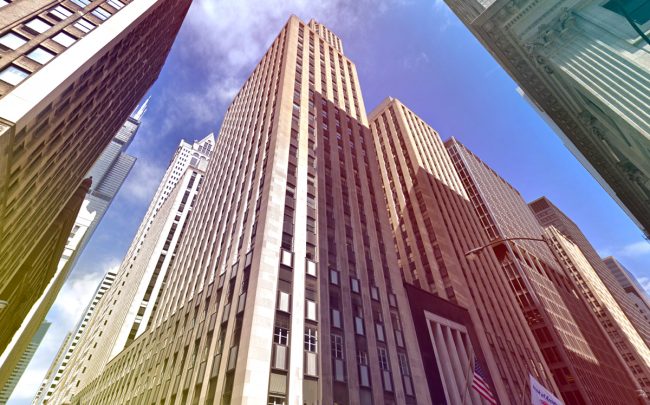
135 South Lasalle (Credit: Google Maps)
“They’re not feeling it yet, but they’re going to feel it when these banks leave and put these big holes and massive blocks of space on the market,” he said.
Shiny and new
It could get worse before it gets better. There’s virtually no new office product in the Central Loop’s development pipeline, but about 7.1 million square feet of office space is expected to be added to the overall CBD’s inventory between 2020 and 2022. It’s primarily new stock in the West Loop and Fulton Market, in neighborhoods teeming with dining and nightlife — the kind of space tenants these days crave.

MB Real Estate’s Kevin Purcell
Pre-leasing activity indicates that new space in the CBD is in high demand: deliveries scheduled for the fourth quarter of 2019 are close to 60 percent pre-leased, and 2020 deliveries are already over 45 percent pre-leased, according to Cushman & Wakefield’s third quarter market report.
At the end of the third quarter, the average gross asking price for office space was $40.63 per square foot in the Central Loop, compared to $43.78 per square foot in the West Loop, where Fulton Market is located, and $41.61 per square foot in the entire central business district, according to CBRE.
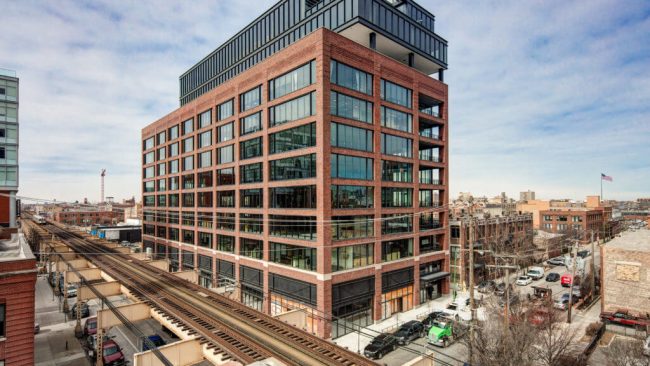
210 N. Carpenter (Credit: Leopardo)
Sheehy wouldn’t be surprised if the Central Loop’s office vacancy rate, which clocked in at 12.6 percent at the end of the third quarter, rose to 16 percent as a result of the upcoming vacancies. The rate could actually climb higher since CBRE’s estimation accounted for healthy absorption numbers, he said.
A radically reimagined Central Loop
Earlier this year, Purcell launched “Get in the Loop,” an initiative to improve the Central Loop and get ahead of the looming vacancies.
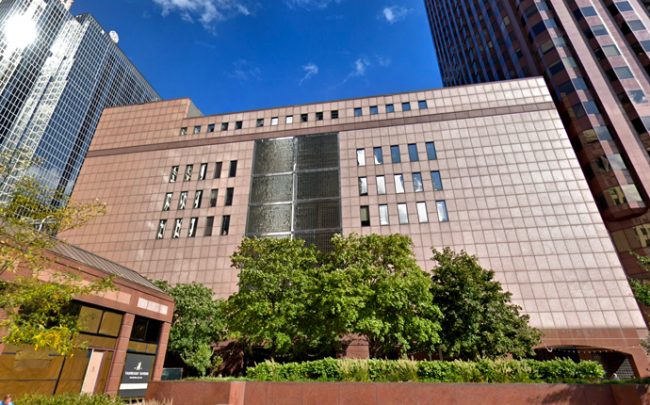
400 S. Lasalle (Credit: Google Maps)
Purcell wants to see a reimagined streetscape. No more banks and cell phone stores that do little to activate the neighborhood. He wants to see restaurants, bars and cafes sprouting up in the neighborhood.
There’s a template, too. Sterling Bay’s reimagining of its 15-story building at 311 W. Monroe proves a real estate investor with the right vision can succeed in the Central Loop, Purcell said.
Sterling Bay, one of the city’s most prolific developers, recently announced that the building is fully leased after signing West Monroe Partners to a 208,000-square-foot lease. The building was nearly vacant when Sterling Bay acquired it in 2017.
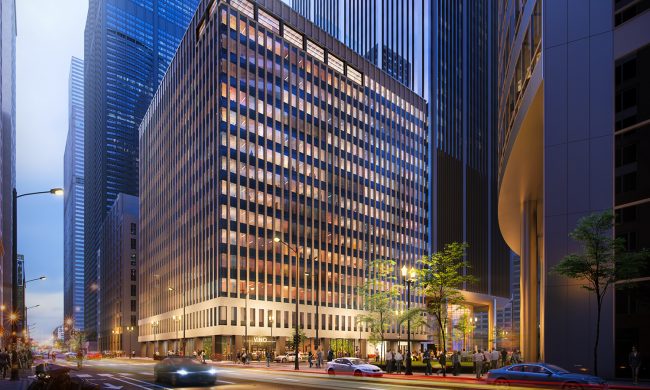
311 W. Monroe
Sterling Bay modernized the 47-year-old building with open floor plans and amenities that are known to attract top talent, including an indoor/outdoor lounge, a fitness center and a bowling alley and game room, and partnered with upscale coworking firm Convene on the ground-floor retail activation.
Convene gave 311 W. Monroe St. a boutique hotel lobby look and feel, Purcell said, which created an entirely new culture, energy and perception of the building. He thinks that kind of vision for retail can have a huge impact on how successful a building owner is in leasing office space.
“A bank on the corner does not excite or create that energy,” Purcell said.
Those types of environments will attract a broader range of tenants from different industries, such as tech, marketing and media, he said, in addition to the typical go-to tenants in the Central Loop, like law firms and financial services firms.
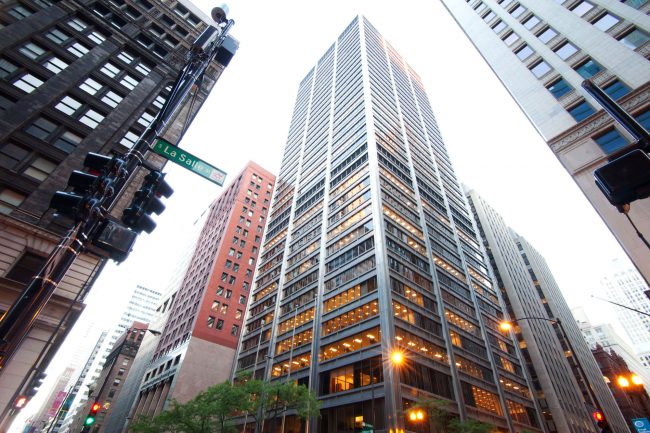
115 S. Lasalle
New targets
Retailers are able to benefit from density, pedestrian traffic and customers with disposable incomes in the Central Loop, but hospitality groups remain concerned that activity tends to slow down dramatically in the evenings and on weekends, brokers said.
In order to secure the best restaurants and cafes, institutional landlords needs to shift their thinking to allow for more visible signage, creative buildouts, and a tenant-friendly financial model, said John Vance, a retail broker with Stone Real Estate.

125 S. Clark
“If landlords want these premium food and beverage operators that will help garner attention to their office buildings to land a 250,000 square foot office tenant, the economics for these well-regarded and highly pursued operators probably needs to change,” he said.
Building owners are interested in bringing in Chicago’s top names in food and beverage — such as Boka Restaurant Group and Hogsalt Hospitality, which reinvigorated Fulton Market — to the Central Loop, Vance said. None have bit. Not yet, anyway.
Vance pointed to one notable retail success in the Central Loop: Blue Star Properties established Revival Food Hall on the ground floor of 125 S. Clark St. in 2016, and it’s been a destination in the submarket ever since. It helped Blue Star attract major tenants such as WeWork, SpotHero and PaperSource. He hopes other landlords will follow.
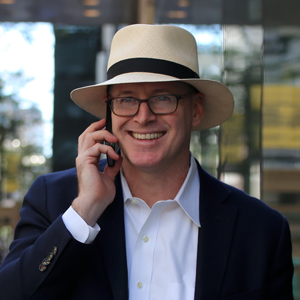
John Vance of Stone Real Estate
“I think with some assistance from landlords providing a creative economic deal, a base level of momentum could be created for the Loop to change the co-tenancy a little bit and then really change the feel of the retail and food and beverage.”
Purcell plans to continue hosting meetings with Central Loop landlords and investors to share ideas, identify what’s working in other submarkets, and recreate it in the Central Loop.
“The sky is certainly not falling, but there’s a large vacancy coming, and we need to be able to attract big tenants to fill that vacancy,” Purcell said.
